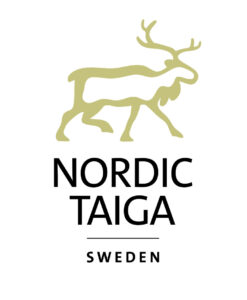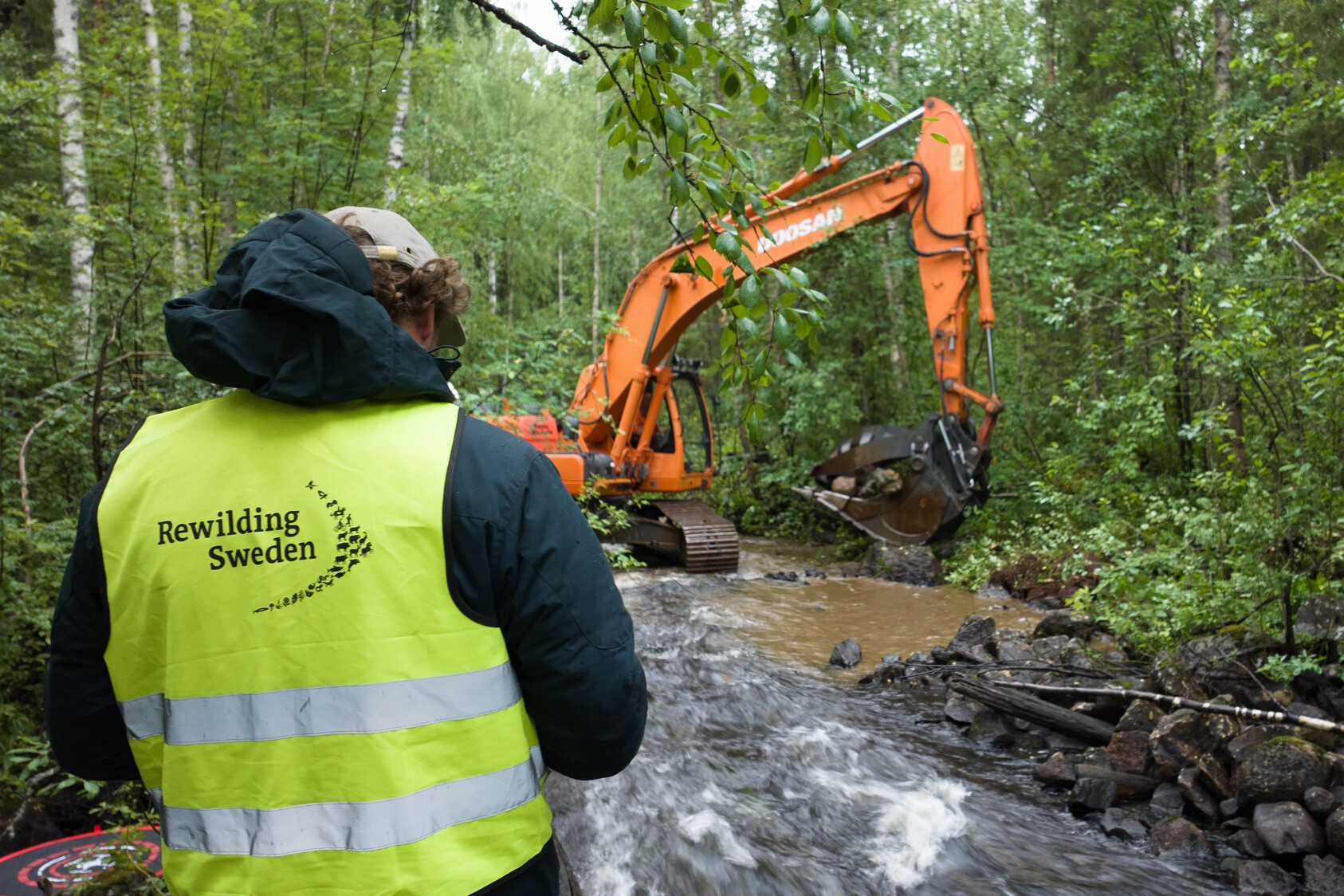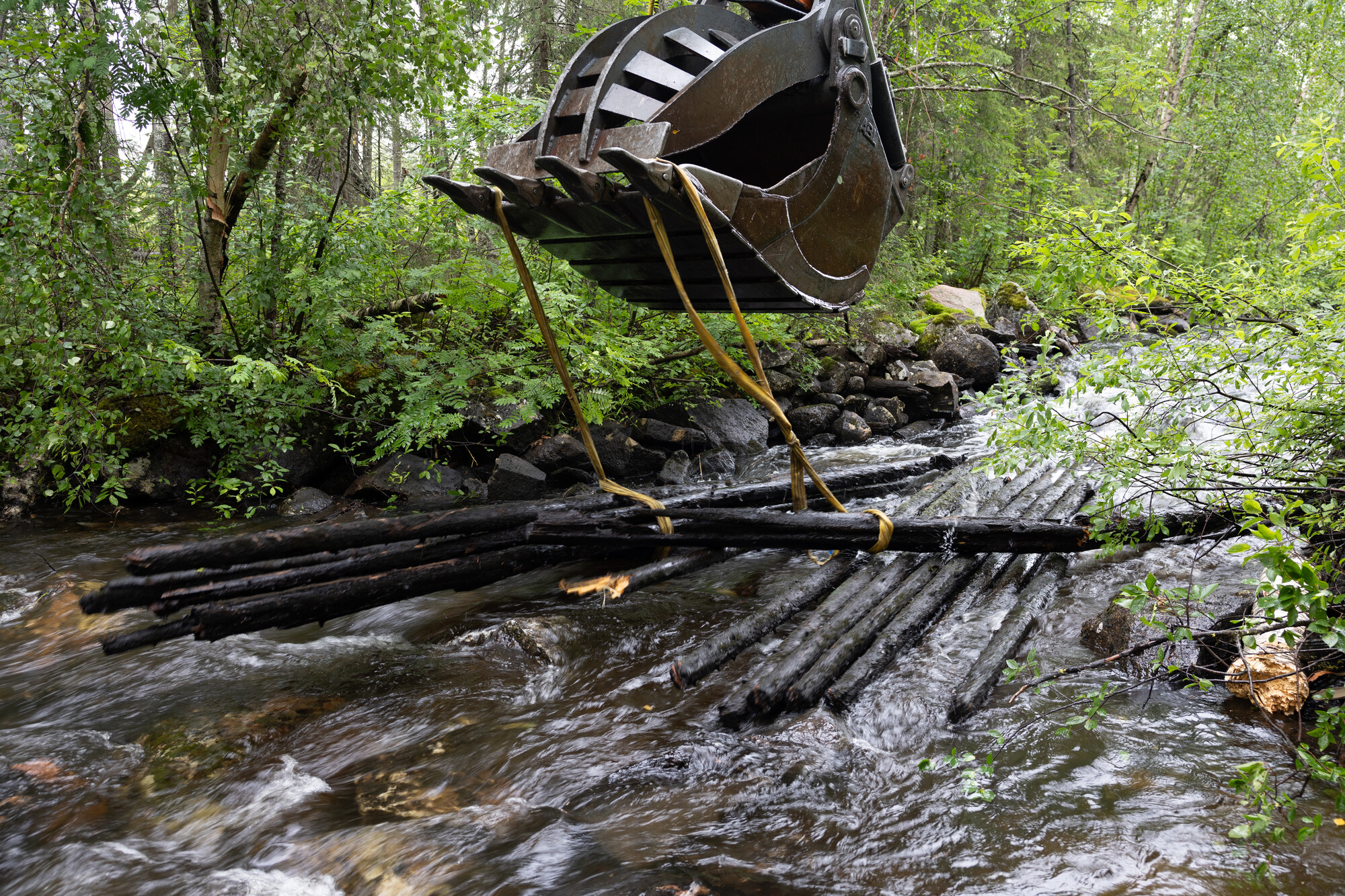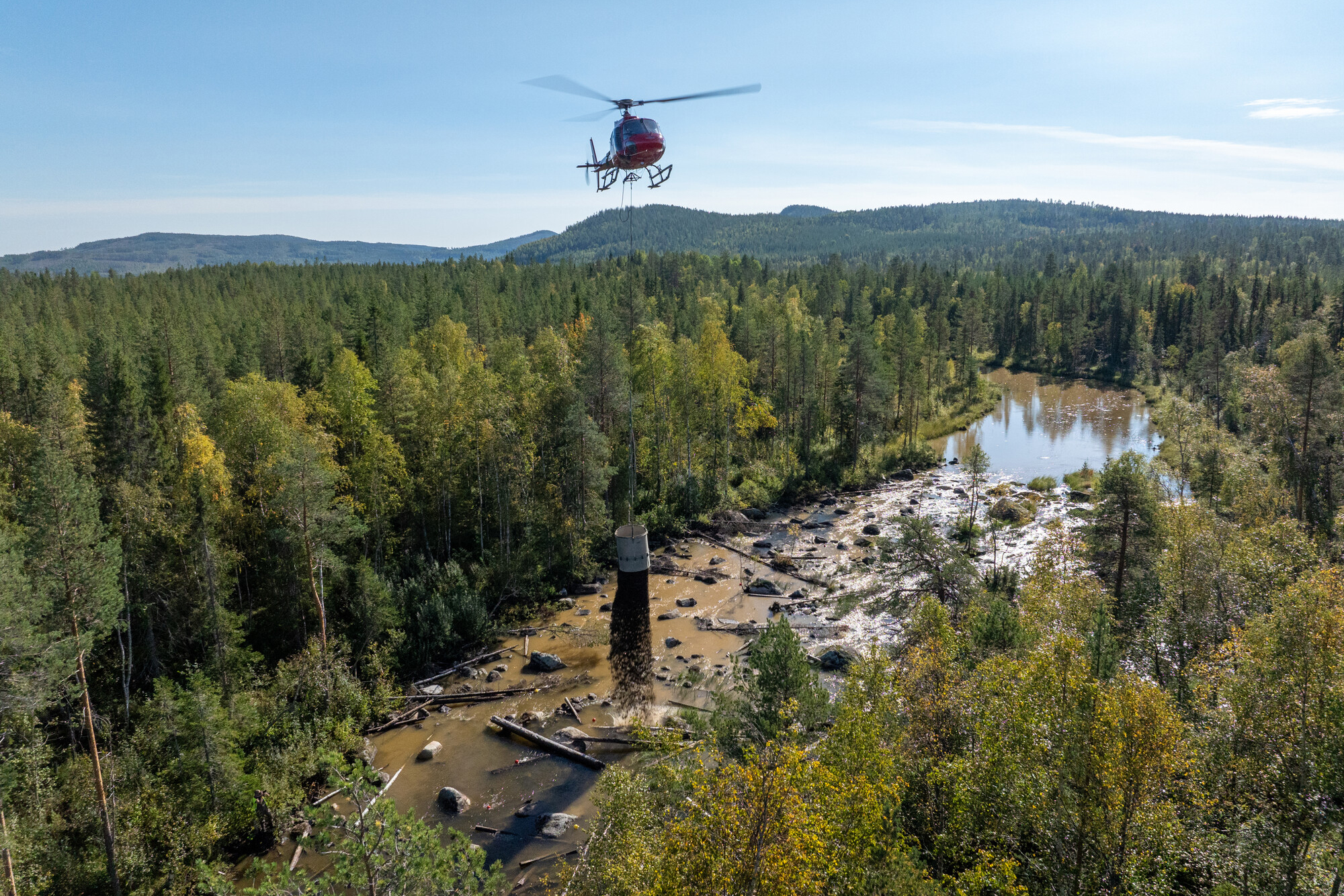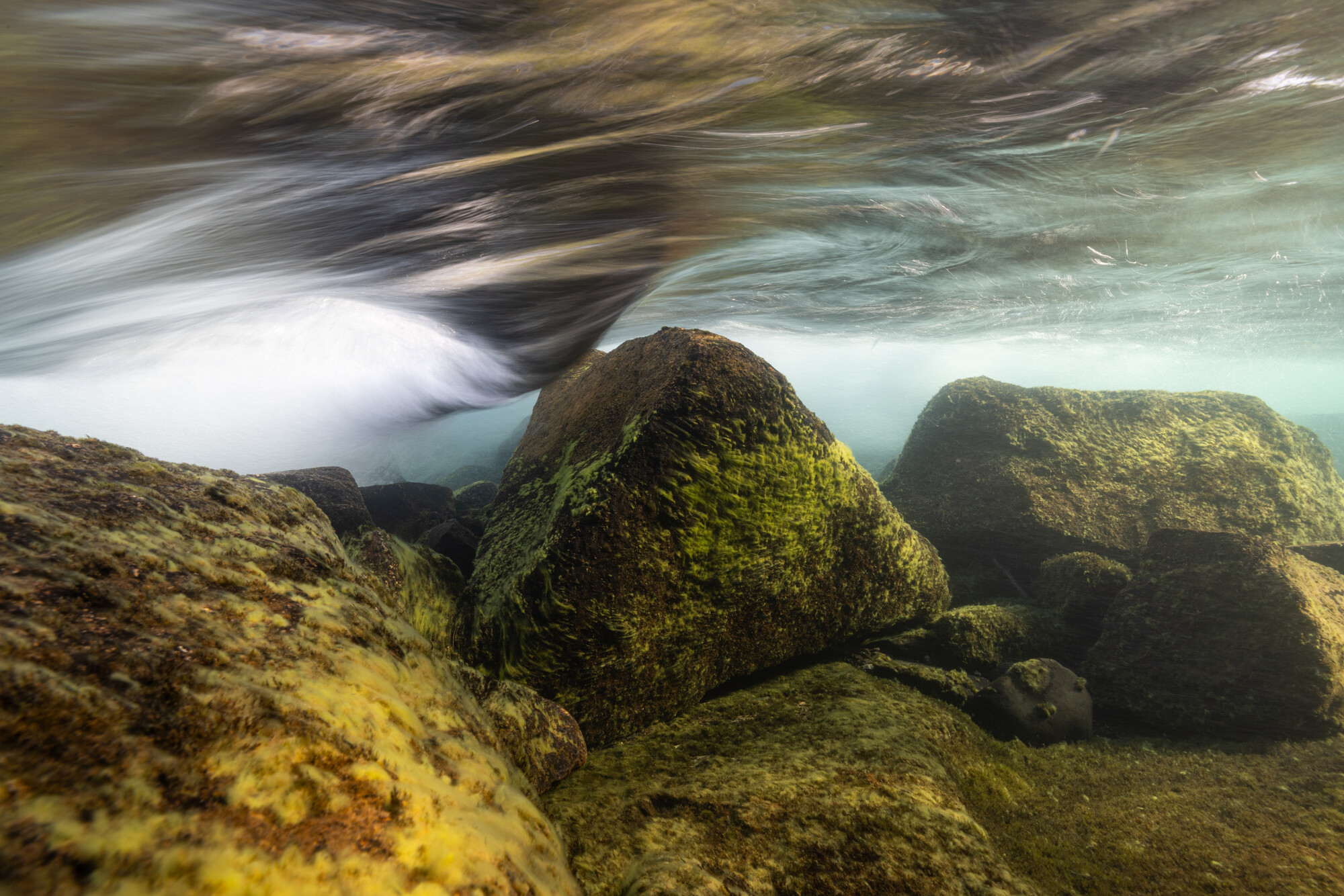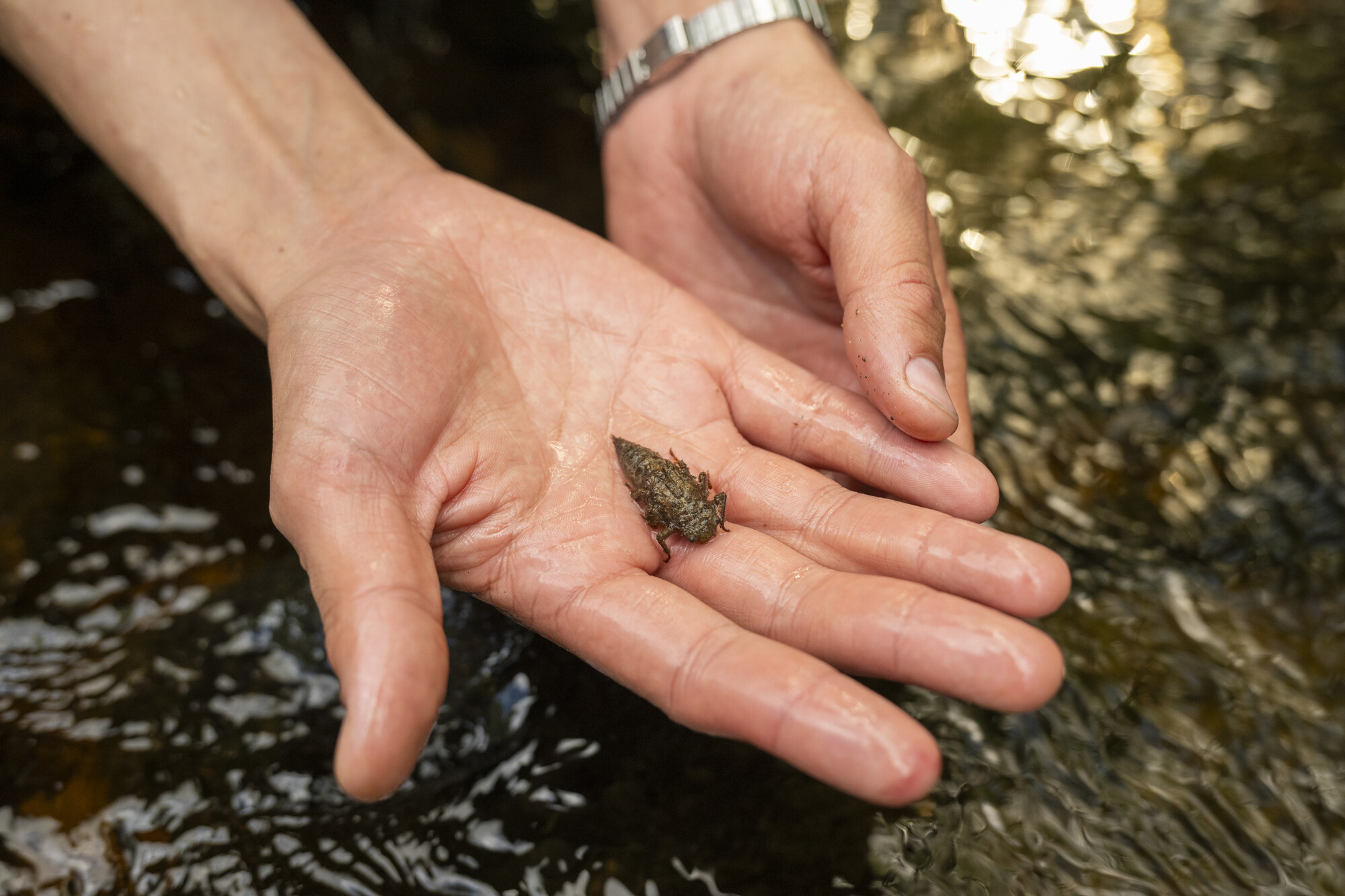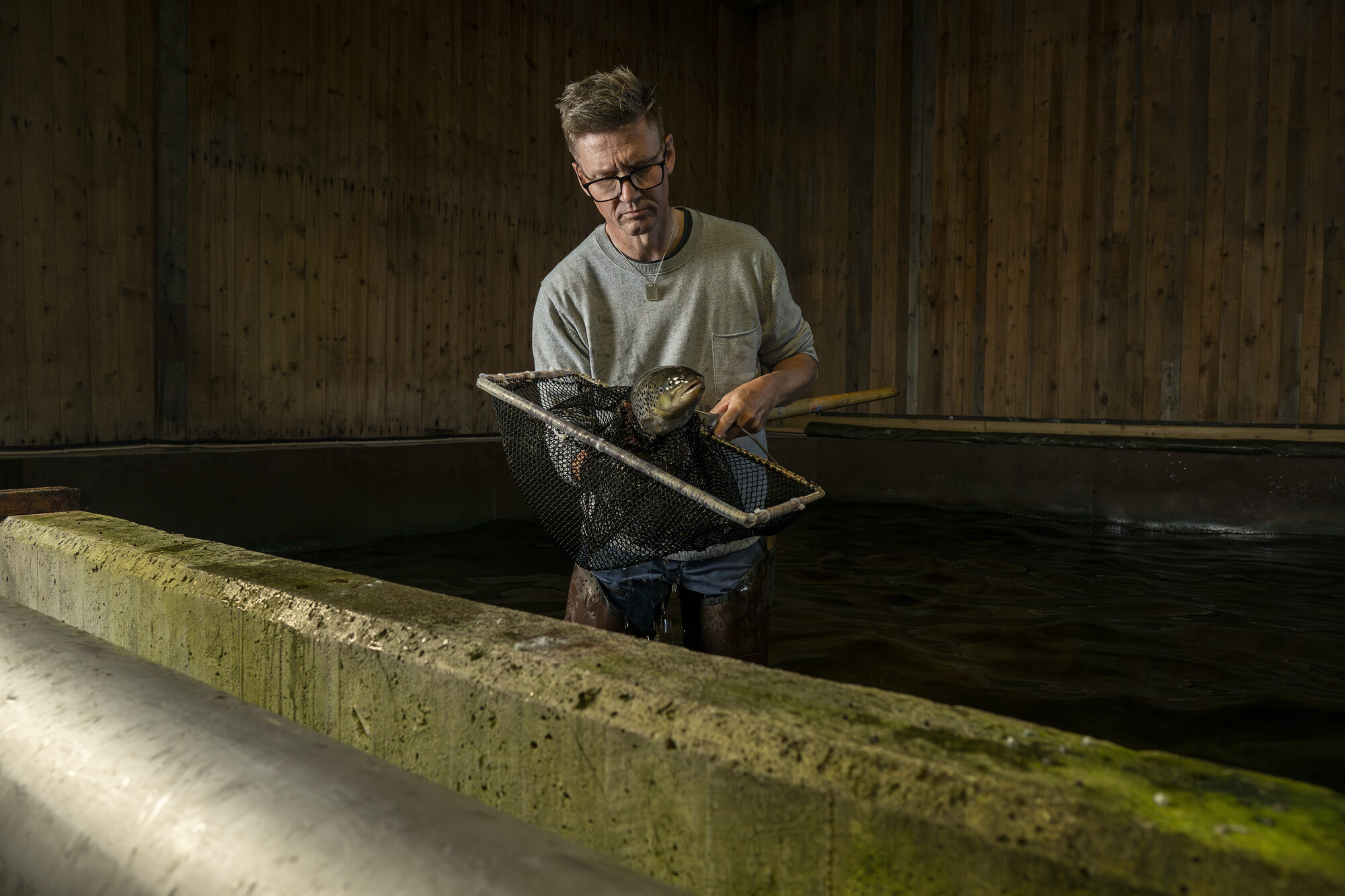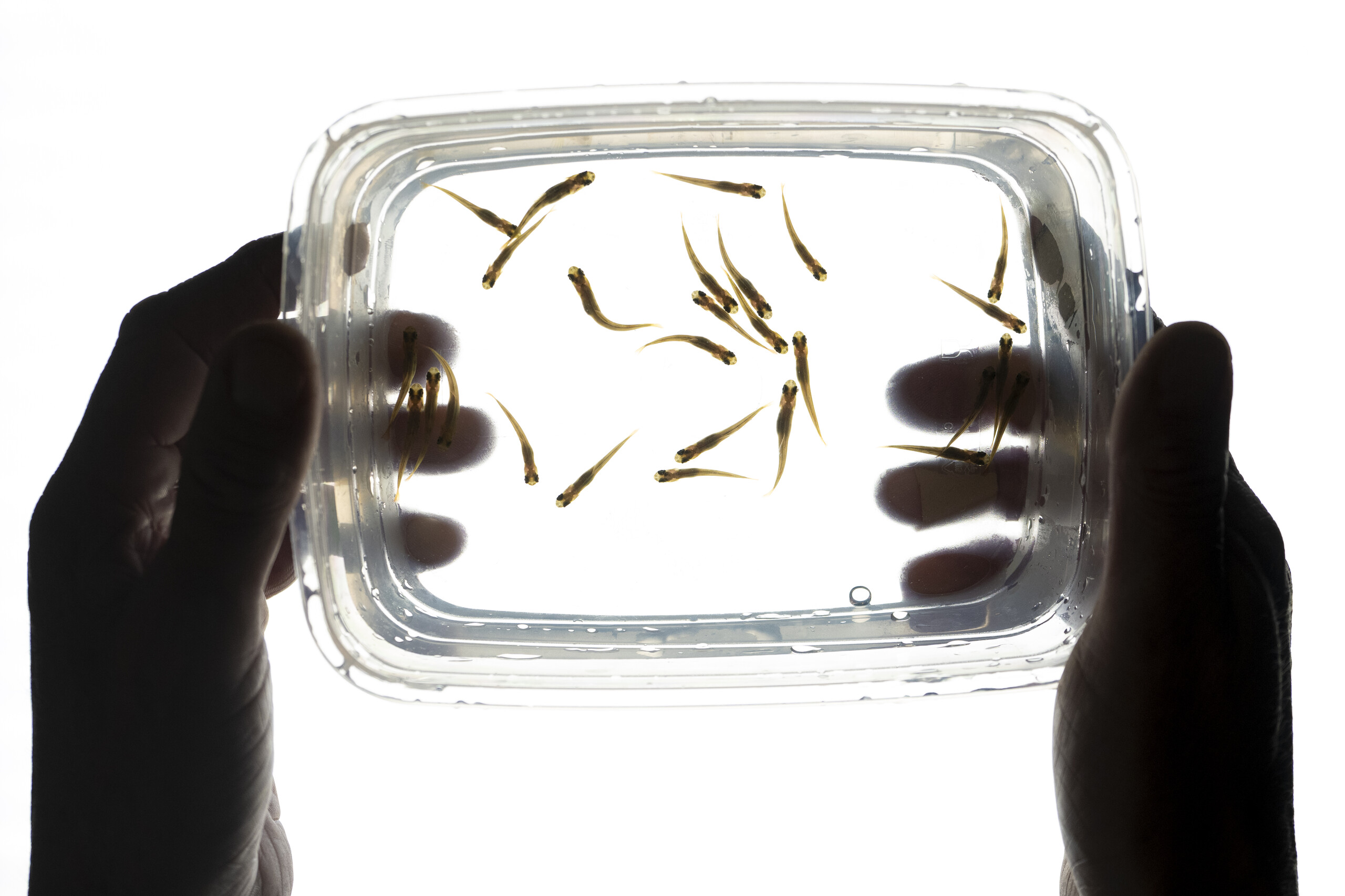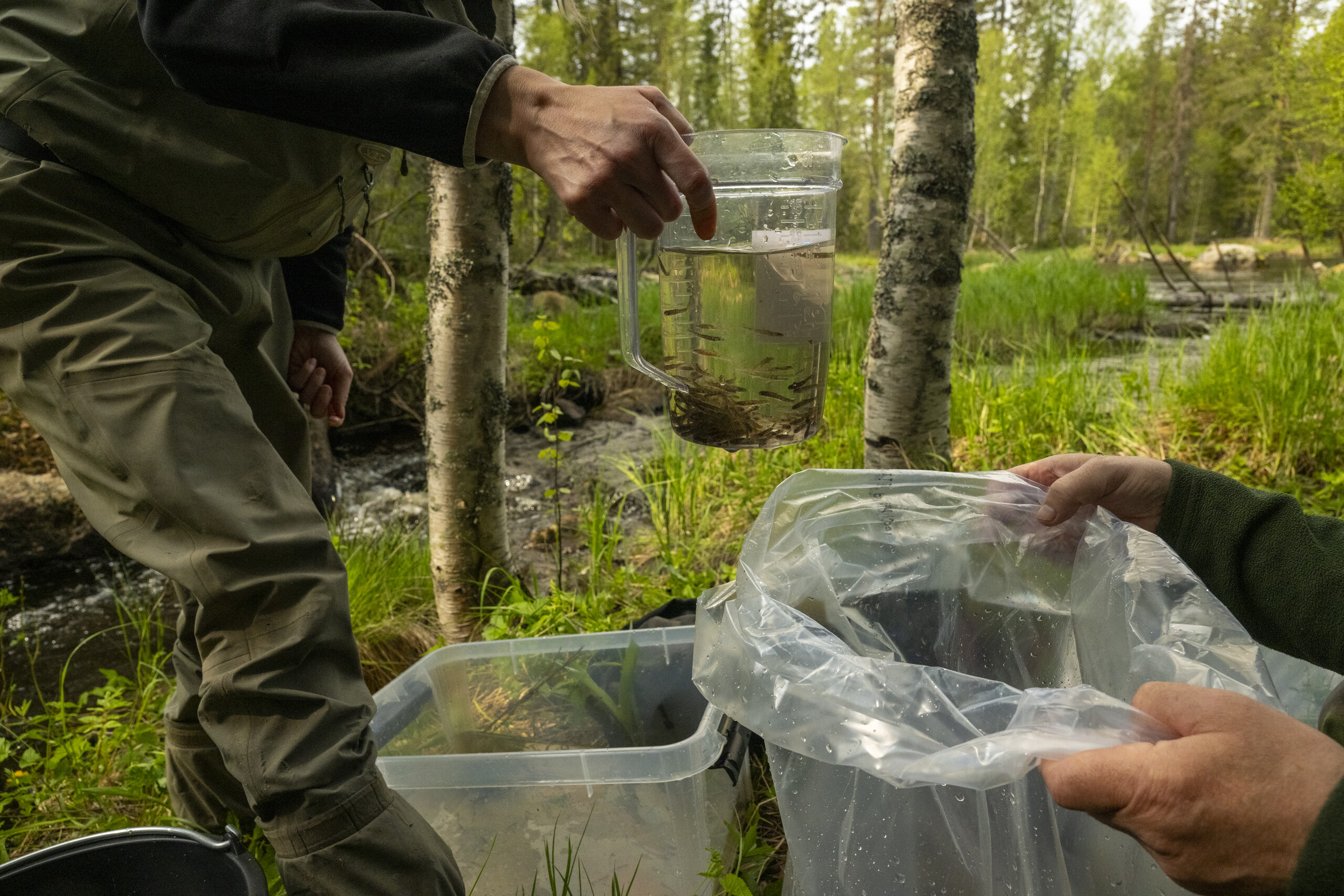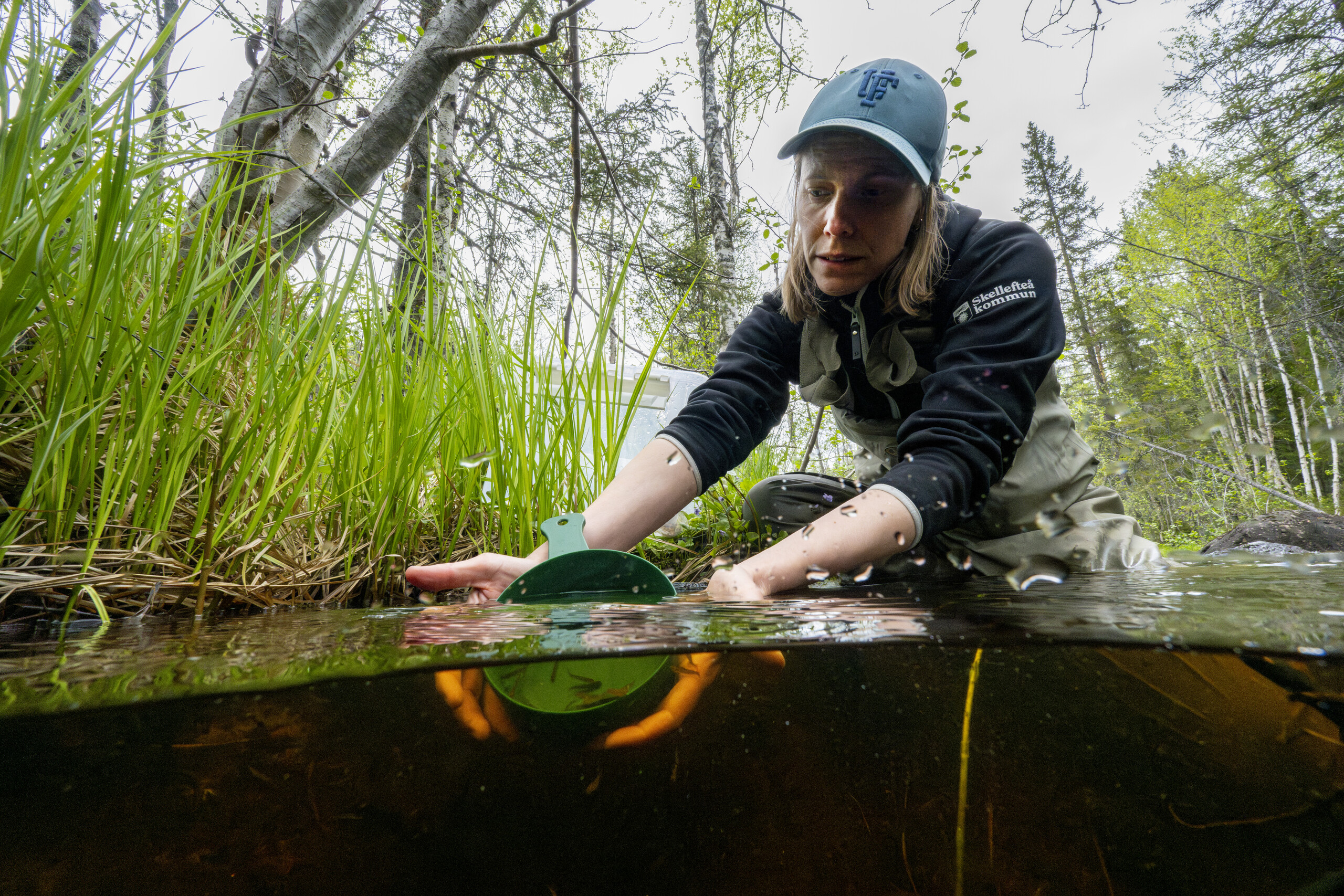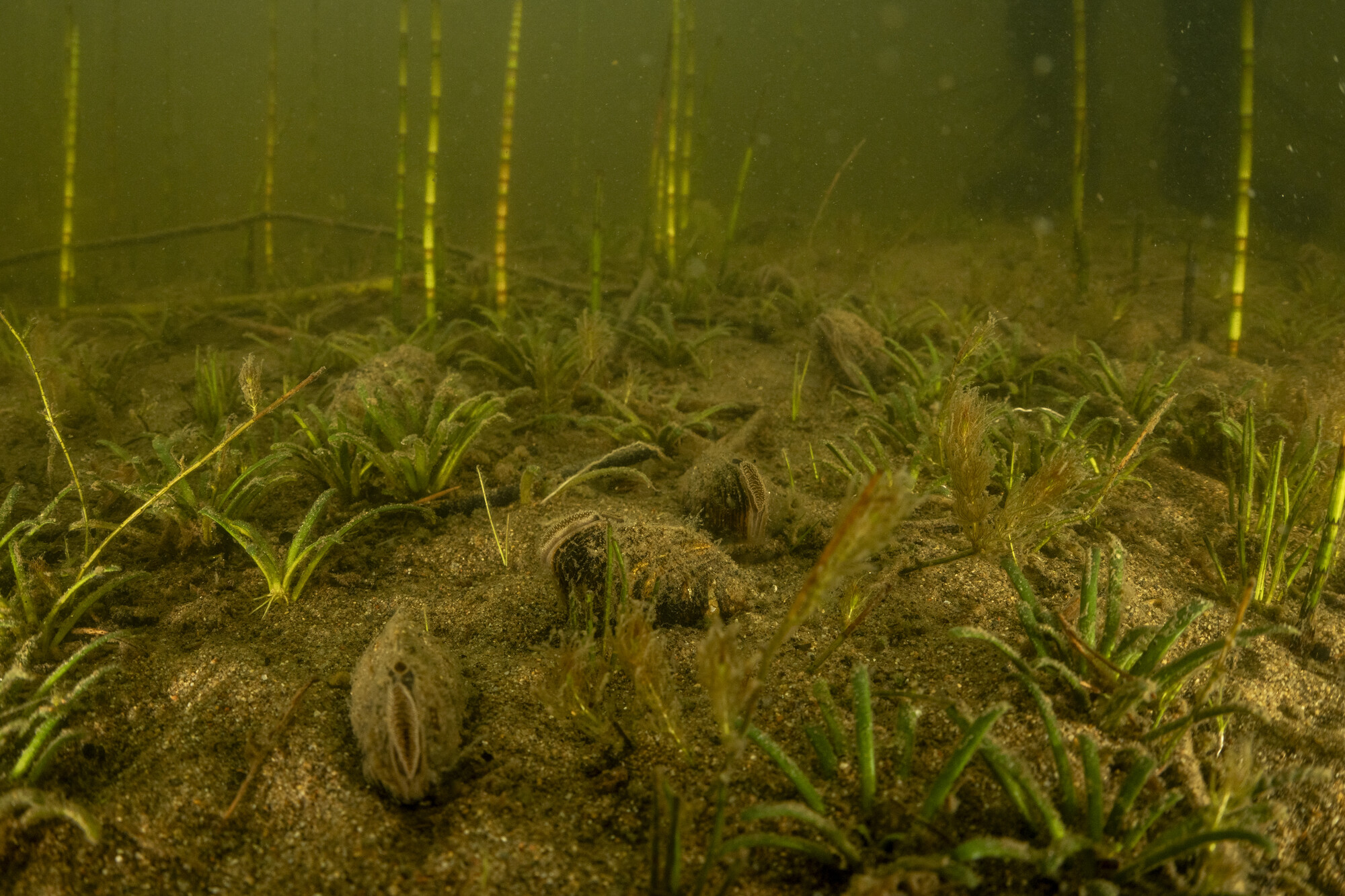The historical channelisation of rivers in northern Sweden harmed populations of brown trout. Today, with the support of Rewilding Europe’s European Wildlife Comeback Fund, rewilding efforts are helping this important species make a return, with benefits for nature and people.
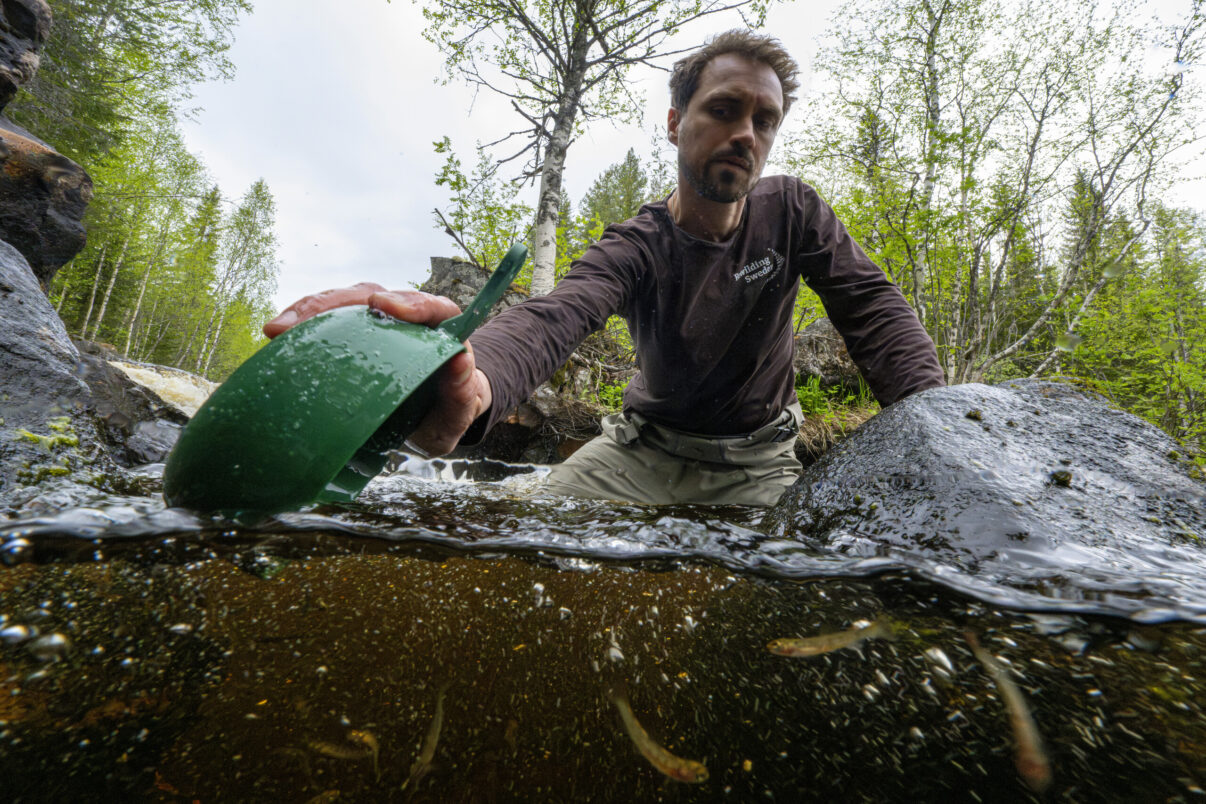
Historical degradation
Rivers are the lifeblood of the Nordic Taiga rewilding landscape in northern Sweden. While many of these rivers have been used for hydroelectricity, those that remain undammed are home to a range of wild fish species, including salmon, trout, lamprey, and grayling. Yet even these waterways and their catchment areas have suffered from lasting damage caused by the forestry industry, which means they – and the landscapes of which they are part – could be healthier and far more natural.
Historical logging and timber floating activities in northern Sweden saw large stones and gravel cleared from riverbeds to enable timber to float freely. This meant that long stretches of many rivers effectively became canals, with walls of boulders and blocks lining their sides. This, in turn, increased the speed of water flow and significantly reduced the diversity of aquatic habitats, as finer sediment was washed away. One of the fish species most heavily impacted was the brown trout, which requires gravelly riverbeds on which to spawn, with populations declining and disappearing in many channelised rivers.
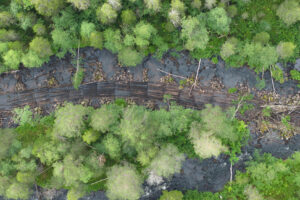
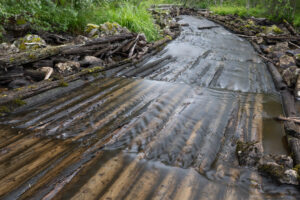
Supporting brown trout comeback
Today, rewilding efforts in the Nordic Taiga are gradually turning the tide for the brown trout, as fish releases help the species make a welcome return in a growing number of rivers. With financial assistance from Rewilding Europe’s European Wildlife Comeback Fund, which provided a grant of 33,000 euros, 125,000 trout fry were released in three tributaries of the River Rickleå – the Sikån, Risån, and Tallån – in early June. This followed a release of 25,000 fry into these tributaries, which are located in the county of Västerbotten, in 2024.
“With historical channelisation a major contributing factor, the existing trout populations in the Sikån and Risån were close to zero,” explains Malin Isaksson, a fisheries consultant working for the municipality of Skellefteå, the second largest city in Västerbotten, which received the grant and oversaw the releases, together with local fishing management associations. “The younger the fish are when they are released, the more they feel at home. This means the fish are more likely to remember where they were released and return to the same spot for spawning.”
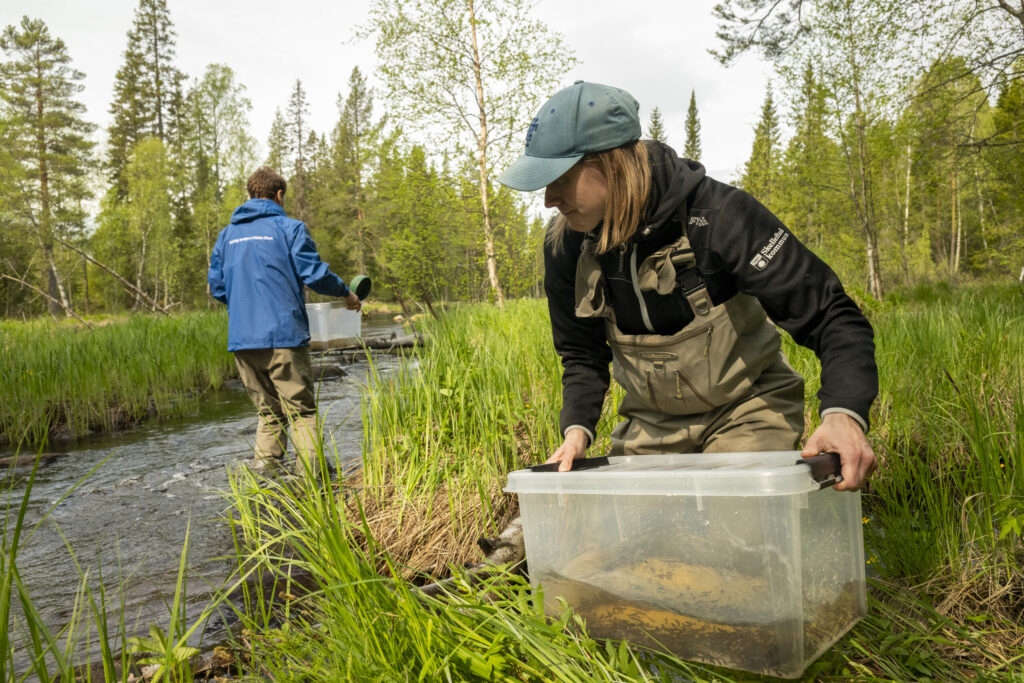
A multi-stage restoration process
The release of trout fry into the Sikån, Risån, and Tallån was one of the last steps in a multi-stage river rewilding process. Over the previous seven years stones and boulders had been replaced in these waterways, recreating most of the rapids and creating far more natural habitats for both fish and aquatic insect larvae. In addition, various obstacles blocking fish migration, such as wooden dams from the timber-floating era, were removed, and sand and gravel were dropped by helicopter to create new habitats and spawning grounds – in much the same way helicopter drops were overseen by the Rewilding Sweden team into the Abramsån River in 2024.
Rewilding Sweden Director and Team Leader Henrik Persson, who previously worked for the municipality of Skellefteå – and who advised them to apply for a European Wildlife Comeback Fund grant – is intimately familiar with these efforts. Many of the stretches along the Sikån and Risån where trout fry were released were restored by him back in 2018.
“It felt like closing the circle coming back to these rivers again,” says Henrik. “Releasing trout into these restored stretches is like laying the final missing piece of a puzzle.”

Henrik Persson
Team Leader, Rewilding Sweden
Breathing new life into rivers
The brown trout fry released into the Sikån, Risån, and Tallån were sourced from a hatchery in the village of Lycksele, around 150 kilometres west of Skellefteå. After being placed in a big plastic bag with extra oxygen, they were then driven to different places along the various rivers. Here they were acclimatised to any differences in water temperature, before being released in calm water behind rocks. In the autumn, the release team will carry out electrofishing – which harmlessly and temporarily stuns fish using electricity – to check on their progress.
The return of brown trout to the tributaries of the River Rickleå is not only good news for the species itself, but wider nature too. Brown trout – which are also known as sea trout when they migrate to the sea – are often seen as a keystone species, particularly in river ecosystems, due to their influential role as both predators and prey. They also have a fascinating relationship with freshwater pearl mussels, with mussel larvae attaching themselves to the gills of young brown trout (and Atlantic salmon), without harming them. The mussels themselves perform an important ecological role, as they filter water and improve water quality for other aquatic species.
“If trout and salmon disappear from a river it means the mussels can’t reproduce, so eventually they disappear too,” explains Malin Isaksson. “This has happened in the Sikån and Risån. But there are still mussels present in the Tallån, where there are more brown trout, so we hope they will naturally recolonise the other two rivers as brown trout populations bounce back.”
A collaborative approach
The catchment of the River Rickleå isn’t the only place in the Nordic Taiga rewilding landscape where brown trout have been released this summer. In June, 50,000 young trout fry were set free along 3 kilometres of a restored stretch of the River Rödån – a tributary of the River Vindel located to the west of the River Rickleå. These efforts were carried out by Vindelälvsfiske (the Vindel River Fisheries Foundation), with assistance from members of the Rewilding Sweden team, and funded by the foundation, Ume/Vindel River Fishery Advisory Board (FAB), Vattenfall, and Västerbotten County Administration. A major factor in the timing of the River Rödån release was the fact that Rewilding Sweden will carry out restoration efforts along this waterway this summer, with the team also involved in a series of dam removals in the Rödån catchment.
“More releases are planned in the future, with follow-up studies determining how this will happen,” explains Daniel Holmqvist, Head Manager of the FAB. “Our overall vision is for well-connected, healthy waterways with an abundance of brown trout, which will help to revitalise nature and support sustainable fishing.”
“Good collaboration with local fishing associations in the release of fish is essential for the sustainable management of recovering brown trout populations in Swedish rivers,” adds Malin Isaksson. “Many people like to fish brown trout here, so the comeback of the species can benefit communities too.”
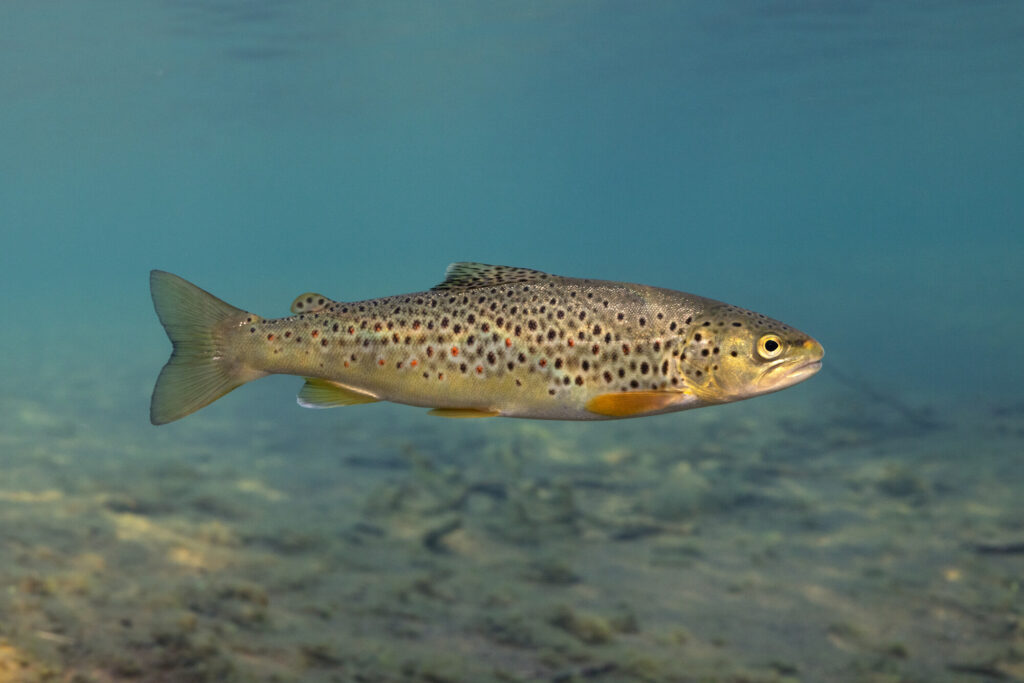
Let’s rewild together
The release of brown trout in the Nordic Taiga this summer shows how funding is critical to restoration efforts. Rewilding Europe’s European Wildlife Comeback Fund, which has an agile set-up, is designed to support wildlife comeback in a convenient and flexible way. Rewilding Europe invites other initiatives working to reintroduce keystone species in European landscapes to consider applying for a grant.
“The grant was easy to apply for and incredibly helpful, as we used it to buy the trout fry and pay for equipment and transportation,” says Malin Isaksson. “I would highly recommend other rewilding initiatives reintroducing keystone species across Europe to think about making an application.”
Those interested in contributing to wildlife recovery in Europe can support wildlife comeback with an online donation. If you’d like to invest more than 50,000 euros in the European Wildlife Comeback Fund, we’d love to get in touch with you personally.
